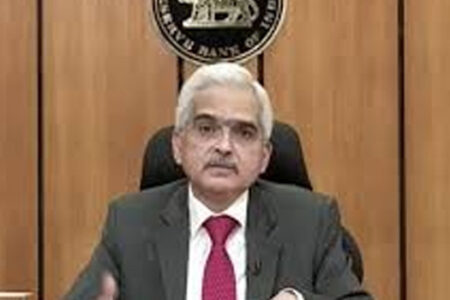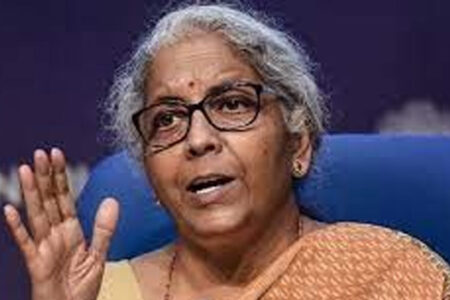On 15 August 1997, then Reserve Bank of India (RBI) deputy governor Yaga Venugopal Reddy, at a foreign exchange dealers’ conference in Goa, had said: “As per the real effective exchange rate, it would certainly appear that the rupee is overvalued…” Reddy’s apparently innocuous statement pulled the local currency sharply down against the dollar. From 35.7 to a dollar, the rupee slipped to 40.7—more than 12%—in the next five months. Clearly, through Reddy the Indian central bank wanted to convey a message to the market. This was the first instance of RBI talking the rupee down.
Many believe current RBI deputy governor Subir Gokarn was emulating Reddy when, on 17 November, he told a business channel that “…the use of reserves to defend an exchange rate, which may not be defensible beyond a point, means we end up with the same pressures and with a lower set of defence against it. So, you have to be very careful about how we use the reserves…”
On being asked about defending the rupee at 52 to a dollar, he continued: “In terms of defending a particular target, I go back to my point that to defend, you have to have capacity, and you could well end up in a situation in which you lose capacity without having achieved your target, which makes it vulnerable to any kind of shock beyond that.”
When a senior finance ministry official, too, reiterated that RBI doesn’t have enough foreign exchange reserves to defend the rupee by intervening in the market, or selling dollars, many dealers saw in their statements a signal from the authorities that they are trying to push the rupee down. After all, on the basis of real effective exchange rate, or the inflation-adjusted value of the rupee— which is the currency’s intrinsic worth—the rupee is slightly overvalued. There has also been a theory doing rounds that if indeed the Greece saga ends in a tragedy, the Indian currency can drop to as much as 56 or beyond to a dollar and Gokarn was merely preparing the market by ensuring a soft landing for the rupee.
The worst performing currency in Asia, the rupee has depreciated 14.45% since January, and the bulk of it has happened since the US was downgraded by Moody’s in August. It hit its lifetime low of 52.73 to a dollar last week after the market found RBI helpless in defending the currency and foreign exchange reserves inadequate.
Communication failure
I’d like to believe this was a failure of communication and Gokarn never meant that RBI would allow a free fall of the currency. Almost a week later, he told an international news agency in Paris that RBI intervened to smoothen sharp movements in the rupee and prevent a downward spiral in its value, “but balanced this with the need to retain reserves in the event of prolonged turbulence”.
He also said RBI was not targeting a specific exchange rate with its interventions. This has been RBI’s stated policy since the East Asian crisis in 1997, and governor D. Subbarao also has recently reiterated this. These statements, along with a series of measures, have helped the rupee gain about 1% last week from its lifetime low to close at 52.26 to a dollar.
The government has raised the ceiling for investment by foreign investors in corporate and government bonds by $5 billion in each category, taking the overall foreign investment in the debt market to $60 billion. Along with that, RBI has raised the limit on interest paid by Indian firms while raising money overseas as well as interest paid on money kept by non-resident Indians with Indian banks. These measures may not increase the flow of dollars overnight but will bring in a semblance of stability in the market. RBI can also ask exporters to bring in their dollar income instead of keeping it overseas. Typically, when the local currency depreciates, exporters tend to delay bringing in their dollar income, hoping to get more rupee out of each dollar.
Since mid-September, when RBI started selling dollars to iron out volatility in the foreign currency market, the Indian central bank has spent close to $6 billion. This is a small portion of the $308.6 billion foreign exchange reserves (as on 18 November), but what Gokarn possibly meant was that RBI could not afford to be over-aggressive in selling dollars as nobody knows how long the global uncertainties will continue and if a large portion of the reserves gets exhausted, the foreign exchange reserves to external debt ratio will get skewed.
If indeed that happens, the rupee could go for a free fall, forcing the government to clamp down on foreign investors who want to take their money out of the country. Apprehending this, they can flee Indian shores en masse and the rupee could end up meeting the fate of the Mexican peso.
In 2008, RBI sold about $55 billion to protect the currency from sharp depreciation in the wake of the collapse of US investment bank Lehman Brothers that led to an unprecedented credit crunch globally.
Money market
Another complex part of defending the rupee is tight domestic liquidity. With every dollar RBI sells, an equivalent amount of rupee gets sucked out of the system and adds to the tightness. This means, by selling $6 billion in the market, RBI has already drained a little more than Rs30,000 crore from the system. This is at a time when banks are borrowing, on an average, about Rs1 trillion from RBI every day. This brings us to a critical question: Is RBI losing its grip on the money market?
Its Rs10,000 crore bond-buying programme was pretty successful last week with banks selling government securities worth Rs9,435 crore to RBI, and the market is expecting a continuation of such bond buying through the open market operation as cash deficit in the system is much more than what RBI has committed to keep to make its monetary policy effective.
As a result of this, banks do not have the appetite for buying government bonds even though credit offtake is slowing. Till 4 November, year-on-year credit growth has been about 18%, down from 22% a year earlier. Since the beginning of this financial year, credit growth of the banking industry has been 6% against 8.8% in the year-ago period.
The government is borrowing an additional Rs52,872 crore from the market in the second half of the financial year, raising its borrowing in the fiscal to Rs.4.7 trillion, the highest ever, and it could go even higher to bridge a widening fiscal deficit. The estimated fiscal deficit for the year is 4.6%, but it can cross 5%.
A substantial part of most government bond auctions was unsold in the past six weeks and it devolved on primary dealers. Even the latest state loan auction received poor response with Jammu and Kashmir and Rajasthan not being able to raise the money. In a show of desperation to attract bidders, RBI auctioned a floating rate bond last week and this could not be sold fully. The market wants assurance from the central bank that it will ease the pressure on liquidity as its stated objective is to keep the cash deficit in the system at 1% of banks’ deposits—about Rs57,000 crore—and the actual deficit now is double this amount and could rise further next month.
The main reason RBI is not announcing a regular bond-buying programme is possibly because it does not want banks to have money to punt on dollars. When the currency is under pressure, any liquidity assurance can encourage banks to play this game. Besides, they have enough leeway to borrow daily from RBI through its repo window at 8.5%. To borrow money through this route, banks need to offer government bonds as collateral. Under banking law, they need to invest 24% of their deposits in government bonds—known as statutory liquidity ratio, or SLR—and any additional bond holding can be offered as collateral to raise money from RBI.
Currently, the banking system’s SLR holding is about 29%. This means, theoretically, banks can borrow up to 5% of their bond holdings or at least Rs2.8 trillion from the central bank. In addition to this, up to 1% of their SLR holding can be borrowed at a higher cost—9.5%—from RBI under the so-called marginal standing facility, introduced this year. Since raising money through this route has a cost, banks are unlikely to do so to punt on the currency.
RBI probably wants to keep everybody guessing about its next move, both in money and currency markets, when the global scenario is uncertain. There is a sense of panic and nervousness, but it’s critical to have a clear communication strategy in place. Otherwise, it will end up destroying the confidence of the market.



